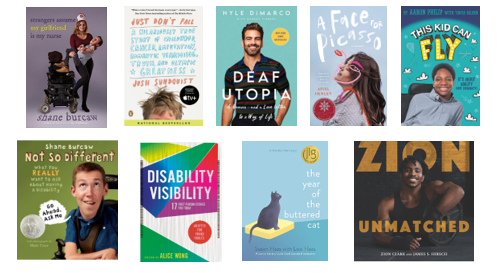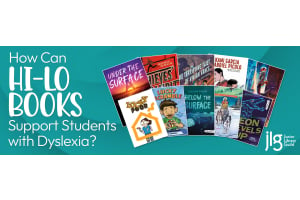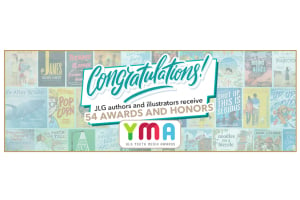Honoring Disability Pride Month: How to Keep Your Library Accessible and Inclusive for Everyone


July is known as Disability Pride Month because it marks the anniversary of the Americans with Disabilities Act (ADA). This law is meant to protect the rights of individuals with disabilities and discourage discrimination, however, people are still marginalized for their abilities or limitations. To help combat ableism and injustice, librarians across the nation strive to make a safe space where all people and communities can see themselves embodied in literature. Inclusivity is imperative—especially in libraries—and that is why JLG makes a deliberate effort to pick award-winning books that celebrate and honor the whole spectrum of abilities.
If your collection needs ability-representative literature, look no further—we have a great list down below—and we’re here to give you a few ideas on how to keep your library inclusive for all of your readers, patrons, and staff!
Tip #1: Audit Your Collection for Cultural Relevance
Reviewing and analyzing your library collection is a huge—yet essential—task. You may decide to tackle a Diversity Audit, a special evaluation of your library that can help you “determine [your] own internal bias and pinpoint areas [that you] may need to be more consciously aware of when selecting materials,” according to School Library Journal. You may also choose to try a “reverse diversity audit” where you consider books of traditionally marginalized people and groups and see how many of those books are already in your collection. If your library collection is too large for one large, time-consuming audit, consider mini audits throughout the year to keep your shelves fresh!
Remember, when reviewing titles in your collection, make sure to analyze the content as well. Just because a book is representative of a marginalized group or has diverse characters and language does not make it an inclusive book; we must identify books that challenge and break down stereotypes while affirming and empowering our readers.
Tip #2: Implement Accessible Services
According to the American Library Association, “Libraries are committed to providing equal access to collections, services, and facilities for all library users.” Accessibility services offered at libraries may include:
-Physically accessible exhibit spaces and meeting areas
-Accessible desks, tables, restrooms, and parking
-Signs and materials that use Braille
-Automatic doors
-Handrails
-Elevators
-Ramps
-Travel paths clear of obstructions
-Adaptive audio/visual technology like headphones and magnifiers
-Various learning materials in large and small print, audio books, eBooks, and DVD’s
Libraries are required by law to implement ADA complaint measures at their library. If a library patron needs extra assistance in an area, they might contact your library for reasonable accommodation.
Resources on ADA Accessibility in Libraries:
-Columbus Metropolitan Library
-Association of Specialized Government & Cooperative Library Agencies (ASGCLA): A Division of the ALA
-Access Advocates: 12 Basic Requirements for ADA Compliance at the Library
Tip #3: Make Your Culturally Responsive Material Visible
We know that book displays are a creative, eye-grabbing way to draw readers in, but more than that, they allow curious readers to inquire about topics in a non-threatening environment. According to American Libraries Magazine, book displays that show representative material can lead to more social and cultural awareness for readers:
Featuring culturally responsive materials in visible ways allows learners to explore serious topics in a safe, controlled environment without feeling like they are fighting a stigma. By exploring coming-of-age topics through the eyes of culturally inclusive characters, learners may feel empowered to discuss and work through potentially sensitive moments with peers or family or even within the school library space.
The next time you go to create a book display, think about how you can expand your theme. For a Disability Pride Month book display, you might ask yourself, “How might people from different backgrounds want to see themselves represented in literature?” or “What literature in the disability community is empowering for its readers?” Have fun and be intentional with your displays and themes.
Conclusion
People of all abilities walk through the doors of your library, and we know that with your expertise, you are equipped to make a safe and inclusive environment for every reader. JLG is here to support your mission; we want to help you and your readers honor Disability Pride Month with books that are inclusive and empowering for the disability community. Take a look at the titles below and add a few just like them to your cart during our Summer Sale from July 27-31!
Disability Pride Month Book Picks:
Fiction
Nonfiction

Autobiography/Memoir











